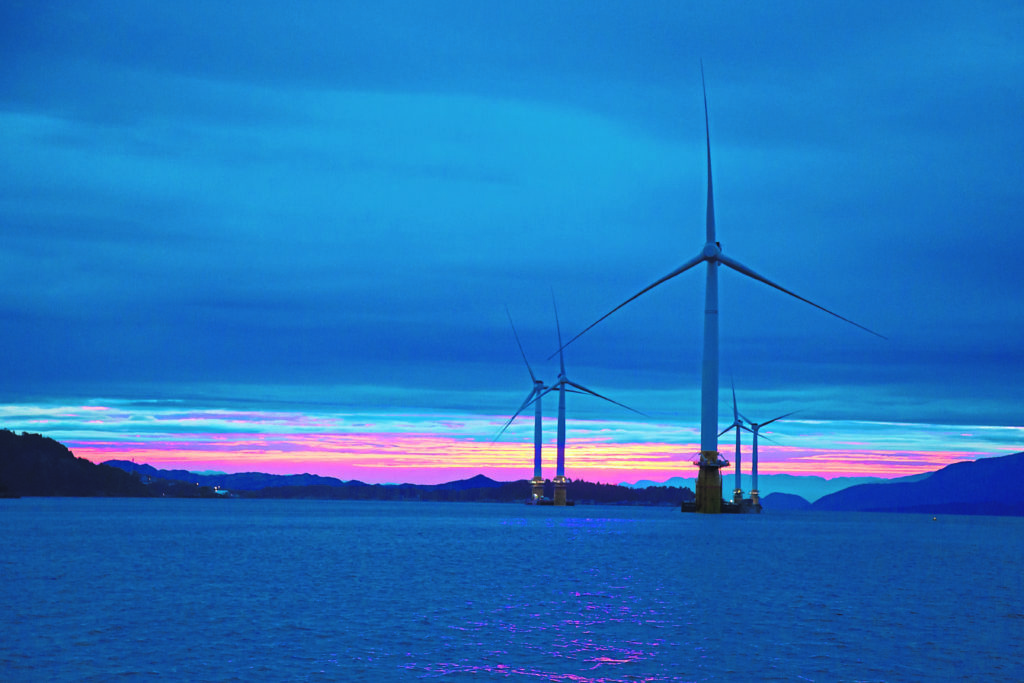
The Scottish Government published Scotland’s first Energy Strategy in December last year.
The ambitious targets it set out included the aim for the equivalent of 50% of the energy for Scotland’s heat, transport and electricity consumption to be supplied from renewable sources by 2030.
To achieve this target will require much more renewable generation than the current level of around 10GW. Indeed, the Scottish Government’s analysis underpinning this target suggests there could be 17GW of installed renewable generation capacity by 2030 producing more than 140% of Scottish electricity consumption – this would then offset some of the requirement for decarbonisation in other sectors.
The excess above Scotland’s own requirements could then be exported, potentially through interconnectors to Europe.
How would this increase be achieved? The bulk of investment in renewable generation in Scotland continues to be in onshore and offshore wind but mainland onshore wind projects now receive no subsidy from Government.
Significant new onshore wind projects will therefore need to find a “route to market” in a subsidy-free world – this may be by means of power purchase agreements with individual companies looking to decarbonise their own businesses.
Onshore generation can also be increased through repowering, upgrading the turbines on existing sites, although this may revive planning objections based on noise and visual intrusion.
Island wind will be an area of focus, since the government’s announcement last year that such projects will be eligible to participate in the next auction for Contracts for Difference (CfDs) in spring 2019.
Since then, the government has confirmed that because of the particular benefits they can offer to these remote communities, remote island wind (RIW) projects (at least 10km from the mainland and meeting certain other criteria) will be allowed to compete for CfDs with less established technologies such as offshore wind, wave and tidal, and also that it will not be setting particular standards for the level of community benefit which must be offered by such projects.
Offshore wind has great potential for Scotland, as I discussed in this column earlier this year.
The Crown Estate published a discussion document in May seeking views of interested parties on how a new leasing round for offshore wind developments in Scotland’s waters should operate. This Crown Estate consultation was focused on areas of search identified as part of Marine Scotland’s Sectoral Marine Plan scoping exercise.
The reaction from industry is that there is a focus on deep water sites. Although Scotland’s renewables sector should be rightly proud of its pioneering floating offshore projects such as Hywind and Kincardine, it will be important that an aspirational approach does not unduly constrain the continued successful development of fixed offshore wind technology, and its proven cost reductions which have huge continued potential for Scotland.
However, Scotland will also need to look beyond the traditional wind and hydro resources to biomass, solar, electricity from waste and other technologies. While the current climate is challenging for new mainland onshore wind projects due to their exclusion from CfD rounds, the Scottish Government continues to champion emerging renewable technologies. Two funds, the Renewable Energy Investment Fund (REIF) and the Low Carbon Infrastructure Transition Programme (LCITP), have invested in or provided grant funding to more than 70 projects – with REIF investing £60 million in 20 projects and LCITP providing grant support of £48m to more than 50 low carbon projects.
However, scale is important and to this end the Scottish Government, through its Low Carbon Innovation Funding Invitation, has committed to invest up to a further £60m in innovative renewables infrastructure projects such as integrated energy systems, renewable heat and infrastructure supporting ultra-low emissions transport.
While the UK Government views nuclear as an important contributor to reducing the carbon intensity of electricity generation, the Scottish Government continues to oppose new nuclear development using existing technologies.
However, it has noted that it is duty bound to assess new technologies, such as small modular reactors, and will continue to do so based on their safety case, value for consumers, and their contribution to Scotland’s low carbon economy and energy future.
A major use of energy is in heating our homes, much of it in the form of gas. Decarbonisation of heat is therefore crucial but this is a bigger challenge than switching to renewable electricity.
The Scottish Government’s aim is for around 20% of non-electrical heat demand to come from renewable sources by 2030. This will involve the more widespread use of ground source or air source heat pumps and biomass boilers, as well as the development of sustainable sources of biomass for those boilers, especially in district heating schemes which provide heat to numerous households.
The Heat Network Partnership brings together a number of agencies working on low carbon heat projects and provides resources, while various subsidies, grants and loans are available from both the UK and Scottish governments.
Scottish Water developed in 2016 the first UK heat from waste water scheme in Galashiels and is now working on other such schemes including a heat from sewage system in Campbeltown.
Another major area of energy use is transport. The question of how fast we will all switch to electric cars is a significant variable in estimates of the pace of greening Scotland’s economy.
The switch from fossil fuels in transport to ultra-low emission vehicles will involve increasingly popular plug-in hybrids, battery-powered electric vehicles, hydrogen fuel cells, and biofuels, not only for cars but also for public transport and freight.
It’s increasingly clear that achieving the Scottish Government’s green energy goals will require not a single magic bullet but numerous projects, both small and large-scale, in many sectors.
The Scottish Government’s championing of renewable generation has contributed to an impressive outcome, with almost 70% of Scotland’s energy in 2017 coming from renewable sources.
However, generation is the easier part of the jigsaw – producing a similar result for heat and transport will be a much harder challenge.
Penelope Warne, the senior partner, CMS
Recommended for you
